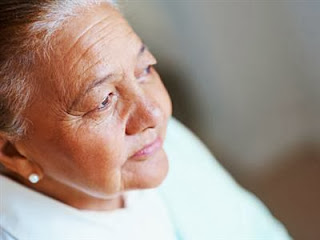"Every year, the media bombards us with advertisements showing the 'happy family' gathering for the holidays. People from different generations are together, having a wonderful time, sharing traditions of old and creating new ones as well.It is not that way, though, for a great number of individuals. For those who don’t have families of their own, or for those who live alone and have relatives living far away, holidays often bring heartbreak and depression. Those who have been used to family celebrations in the past and no longer have that to look forward to cannot accept the “change” in the tradition, especially if they keep hearing about others who are getting together with their own families." - Read more at Caregiver.com
This article by Helen Hunter, ACSW, CMSW, covers four great suggestions to evade the holiday blues. Other tips I recommend are:
1. Write
It's well know that Abraham Lincoln was an exceptional writer. He actually wrote all of his speeches as President and wrote many letters during the war. However, a handful of those letters did not get sent--intentionally. This is because when Lincoln was angry he would write piercing letters to the targeted individual, all to put the letter away in a folder labeled "never sent or signed". As a lawyer and President, he had to keep his composure, and writing those letters help in do so.
2. Cry
It is ok to cry. Wether it's out of happiness, sadness, frustration, or anger. For similar reasons as writing a letter, it's so much better to let it out than hold it in.
3. Ask
Find a way for someone to cover for you in order for you to indulge in a luxury. Whatever that is to you: shower uninterrupted, shop, see a friend, play golf, go for a drive, etc. A few hours can make all the difference.
These tips are great addition to my posts on How to Make the Most of this Holiday Season and my Caregiver Travel Guide. Use these tips during any travel season, be it winter, spring, summer, or fall.
Here's to hoping you enjoy the journey as much as you enjoy the destination.
1. Write
It's well know that Abraham Lincoln was an exceptional writer. He actually wrote all of his speeches as President and wrote many letters during the war. However, a handful of those letters did not get sent--intentionally. This is because when Lincoln was angry he would write piercing letters to the targeted individual, all to put the letter away in a folder labeled "never sent or signed". As a lawyer and President, he had to keep his composure, and writing those letters help in do so.
2. Cry
It is ok to cry. Wether it's out of happiness, sadness, frustration, or anger. For similar reasons as writing a letter, it's so much better to let it out than hold it in.
3. Ask
Find a way for someone to cover for you in order for you to indulge in a luxury. Whatever that is to you: shower uninterrupted, shop, see a friend, play golf, go for a drive, etc. A few hours can make all the difference.
These tips are great addition to my posts on How to Make the Most of this Holiday Season and my Caregiver Travel Guide. Use these tips during any travel season, be it winter, spring, summer, or fall.
Here's to hoping you enjoy the journey as much as you enjoy the destination.










